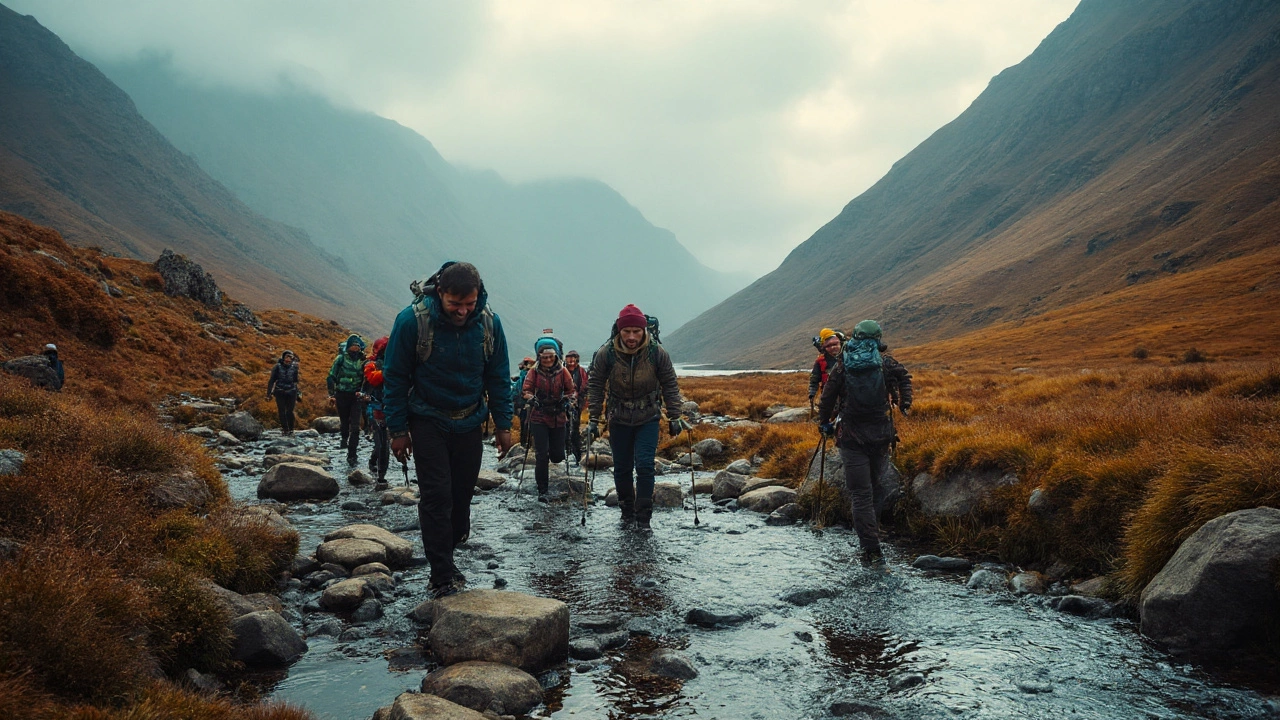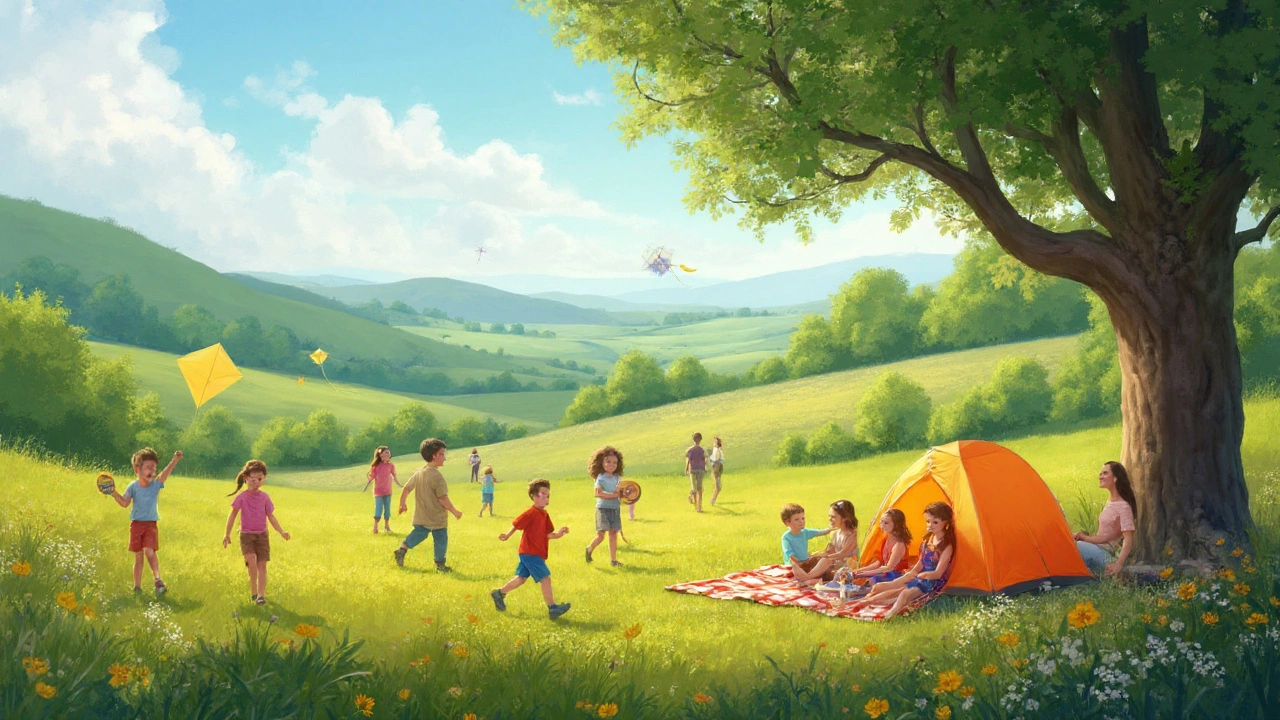Fresh air wakes up your mind faster than a double espresso. You feel your feet hit the ground, see sunlight cut through tree branches, and, for a second, it's like all the stress just melts off. But when you want to get outside, what should you actually do? There isn't one answer because outdoor activities have exploded in variety. Traditional sports, hidden adventure gems, community relaxation—each one draws out a different type of joy. There's a whole universe of outdoor fun, and once you start breaking it down, you realize Mother Nature doesn't play favorites—there's something for every mood, fitness level, and curiosity. Now, let’s untangle the web of categories that make outdoor activities so endlessly fascinating.
Nature and Exploration: Where Curiosity Guides You
There's a sort of magic that happens when you step out the door with the intent to explore. This branch of outdoor activities is all about connecting with the land—whether that’s through hiking, backpacking, birdwatching, foraging, or simply wandering down a new path in the woods. According to the American Hiking Society, there are over 193,000 miles of hiking trails in the U.S. alone, and that doesn’t even count off-the-map routes or other countries’ wild trails.
Hiking is probably the crowd favorite here, but don’t forget about nature walks, which are slower and often focused more on observing wildlife or plants. If you like a challenge, backpacking strings together hiking and camping into a multi-day adventure. Birdwatching exploded during 2020—with the National Audubon Society reporting a 60% spike in people IDing birds from their yards or parks. Nature-oriented scavenger hunts make it fun for families: making a list of things to find, like acorns, different leaf shapes, or a bird’s nest. Even urban exploring counts, like checking out city parks, botanical gardens, or riverside walkways.
What sets this category apart is the “explore and observe” aspect. It doesn't demand peak physical performance, but sharpens your senses. Bring a simple journal and log what you see—plants, animal tracks, fungi, insects. There’s evidence from Cornell University that spending just two hours a week in nature can lower blood pressure and boost mood. Gather a group or go solo. Don’t forget the little rituals, like bringing a thermos of tea or hot chocolate for a scenic break. Even cloudy days have their own charm—fog makes the world mysterious.
Wildlife watching, geocaching, and even stargazing at night fit smoothly in this slot. Foraging for edible plants or mushrooms, if done safely, adds that extra thrill of reward (pro tip: never eat anything you can’t ID with 100% certainty—local clubs are really helpful for this). Nature photography is getting more popular, thanks to smartphone cameras and social media—if you spot an owl or deer, a quick photo makes you feel like National Geographic material. Bottom line: if your passion is “seeing what’s out there,” then nature and exploration activities belong at the top of your weekend list.
Adventure and Thrill-Seeking: Where Adrenaline Meets the Outside
If the idea of ‘fresh air’ is only interesting to you when it comes with heart-pounding action, then you’re an adventure buff. This category is where you’ll find outdoor activities like rock climbing, mountain biking, whitewater rafting, trail running, skydiving, and backcountry skiing—or, for the less hardcore, zip-lining and ropes courses. The planning and skill level can range from beginner-friendly to ‘need a helmet and waiver.’
Let’s get specific. Rock climbing—whether on natural cliffs or indoor gyms that mimic them—offers a mind-body puzzle that’s as much about solving the route as it is about strength. Bouldering doesn’t require ropes, just thick crash pads under low routes; sport climbing introduces you to harnesses, carabiners, and serious bragging rights. According to the Outdoor Industry Association, participation in climbing has increased by almost 10% year over year since 2017.
Mountain biking’s appeal is the mix of control, speed, and raw terrain. Trails are rated like ski slopes (green circle for easy, black diamond for expert). Even if you’re just rolling through local singletrack, the thrill of hopping over roots and cruising down hills is unbeatable. Whitewater rafting and kayaking crank it even higher—rivers are rated on a 1 to 6 scale based on danger, and some companies now offer guided beginner trips, so you don’t have to dive straight into class V rapids.
Zip-lining taps into the wish to fly without jumping out of a plane, and kids as young as six or seven can try beginner runs. Trail running splits off from hiking for those crank up the distance and speed through forests or over mountain ridges. Parkour—yes, the kind you’ve seen in crazy YouTube videos—blends urban and outdoor skills, flipping playgrounds and city parks into obstacle courses.
This category is a magnet for people who want to test their nerve and skill. It can get expensive if you’re collecting gear for every niche—climbers, for example, always seem to find a reason for another harness. Most adventure activities require lessons, partners, and at least a baseline respect for weather, conditions, and safety. That being said, there’s a wild sense of accomplishment in finishing a tough climb or crossing a rapid you didn’t think you could handle. As a tip, start small, borrow gear where possible, and don’t be afraid to join a class—you’ll learn safe habits and probably pick up a friend or two. Adrenaline isn’t just about going fast; it’s about pushing your boundary just enough to make the world feel bigger.

Sports and Fitness: Competing and Training in the Open Air
Some like their time outside a little more organized, with rules and maybe even a trophy at the end. Sports and fitness activities outdoors have a range that goes from solo efforts to epic team tournaments. Soccer, baseball, tennis, swimming (in lakes, rivers, or pools), golf, ultimate frisbee, and beach volleyball are arguably the classics, but don’t knock the newer inclusions like disc golf, outdoor yoga, and trail fitness bootcamps.
Team sports outdoors create instant connection—shared wins, losses, and a healthy bit of trash talking. Even if you’re out of school, adult leagues are everywhere these days. Pick-up basketball on a neighborhood court can build surprising friendships (and rivalries). The Sports & Fitness Industry Association says soccer is played by over 11 million adults in the U.S.—so odds are good you can find a local group by browsing town bulletins or community Facebook pages.
Running is hugely popular and easy to start—all you need are shoes and somewhere to go. Marathons, 5Ks, mud runs, and color runs have all found devoted communities in cities and countryside. If competition isn’t your style, trail running can be quietly meditative—especially on twisting forest trails where you don’t see many people. Outdoor swimming picks up in the summer, but cold-water dips (with proper guidance and safety) have turned into their own trend—the UK’s Outdoor Swimming Society saw its membership jump 35% in the last five years.
Outdoor fitness doesn’t always mean competition. Yoga in the park, open-air group bootcamps, tai chi by a lake, and solo bodyweight circuits give a new energy boost. Disc golf is one of those quirky activities that quietly builds a cult following; most courses are free, and the equipment's cheap. If you want something a bit offbeat, try orienteering (navigating with map and compass)—it’s more physical than you’d guess.
For those who like a mix of nature and structure, activities like mountain biking races, biathlons (running and cycling), and even obstacle races (think Spartan or Tough Mudder) push your fitness as much as your grit. One big benefit of exercising outside, according to Stanford research, is sharper thinking afterward—nature workouts can decrease anxiety and leave you with more mental focus for the rest of your day. So, if your jam is getting sweaty with a side of endorphins, this outdoor activities category is calling your name.
Relaxation and Social Fun: The Low-Key Side of Outdoor Living
Not every outdoor activity needs to feel like a challenge. Sometimes, being outside is just about decompressing or chilling out with friends. Picnics, barbecues, outdoor movies, hammock lounging, painting in the park, or just lying on the grass to cloud-gaze are real, valid outdoor activities. This category elevates hanging out to an art form.
The National Recreation and Park Association found in a 2024 survey that “just spending time at the park” is the most-cited way people use green spaces. There’s nothing wrong with low-key. In fact, unplugging from tech and stepping away from that to-do list is great for your mental health. Pack some snacks, a Bluetooth speaker, a frisbee or football, and you’ve got all you need. Board games like Codenames or Exploding Kittens? Totally doable outside. If you’re near a beach or a river, floating on an inner tube (with sunblock!) adds bonus points.
Social outdoor activities also cover group walks, dog meetups, book clubs in public gardens, or family scavenger hunts. If you’re a parent, the trick is to let kids lead—the game of “can you find five weird sticks” often outlasts more formal plans. Community events, like outdoor yoga sessions, local theatre under the stars, or seasonal festivals, blend culture with fresh air. Parks have started installing outdoor pianos, ping-pong tables, and even lending libraries to make it easier for everyone to join in and create memories.
What makes this category shine is its low barrier to entry. No gear needed most of the time, no experience required, just a willingness to spend a few hours outside. If anxiety or social stress has been crowded inside your brain, this slower-paced, friendly version of outdoor recreation might actually work magic. Even something as simple as setting a regular Saturday “outside coffee hour”—bring your mug to the front porch or a park bench—builds a personal ritual that grounds you.
This branch of outdoor activities gets overlooked in the mad rush to ‘be sporty,’ but it's worth defending. The world outside your walls is equally about peace as it is about peaks. You don’t have to summit a mountain or win a trophy; sometimes, just lingering under open sky is exactly what your brain (and your friendships) need.

